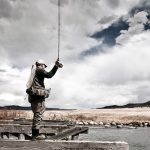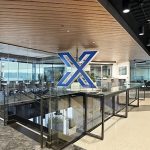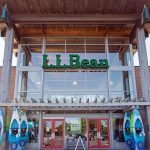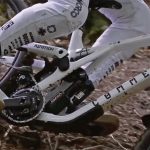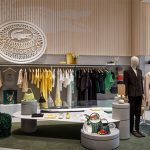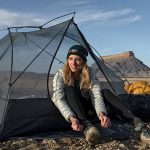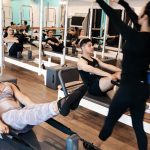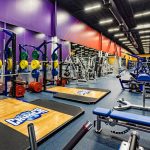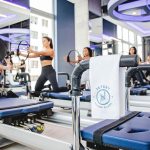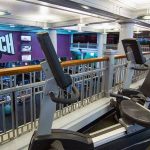Overall sales for the entire winter sport market, were up 3% in dollars to $323.3 million for the August through October period of 2004, compared to $313.7 million reported last year, according to the SIA Retail Audit. Unit sales were down 3.6%. Sales at chain stores were up 12.3% compared to last season. In dollars, that translates to $66.7 million in sales compared to $59.4 million in 2003. Unit sales were down from last season 4.3%.
“Equipment carryover sales plunged in chain stores this season pushing average retail selling prices up. Chain stores benefited from a leaner market which drove dollar sales up 12% over last season for the same three month period,” said Christine Martinez, market research manager for SIA, the not-for-profit industry trade group that represents manufacturers and distributors of snow sports products. The SIA Retail Audit tracks and reports sales in all snow sports product categories. This is the first report of six that look at sales through March 31, 2005, the end of the winter season.
EQUIPMENT CARRYOVER SALES PLUNGE
By the end of last season, chain stores had sold most of the market’s excess product. In the first three months of the season, carryover ski sales were down 13% in dollars while carryover binding sales dropped 12% in dollars. Carryover boots accounted for 20% of all units sold, which was down from 29% in the same period in 2003. Plunging carryover pole sales dragged the pole category down 17% in dollars. Plummeting carryover units for alpine skis (down 30%), alpine bindings (down 40%) and snowboards (down 48%) made way for new, more expensive products that made up for the overall unit declines.
HIGHER RETAIL PRICES SPIKE DOLLAR INCREASES
Overall equipment sales (alpine, snowboard, Nordic, Telemark and Randonee/AT) were up 9% in dollars as compared to last season with sales totaling $15.7 million by the end of October. Equipment sales fell in units but average retail prices surged from $101 last year to $128 this year. Alpine equipment sales (including skis, systems, boots, bindings and poles) managed to gain 3% over last season ending October 2004 with $8.1 million in sales. Average retail prices jumped from $112 to $145.
Alpine skis, excluding integrated systems, fell 11% in dollars as integrated ski systems rose 10% in dollars. Average retail prices of integrated ski systems increased from $343 to $416. Last year in the same period, alpine skis outsold integrated systems 2.2 to 1 in dollars. This year the ratio fell to 1.8 to 1.
Every alpine ski category was down in units with the exception of adult carve skis which jumped 47% in dollars. Average retail prices of carve skis moved from $157 last year to $219 this year. Midfat skis, 32% of all units sold, plummeted 23% in dollars.
In August – October, alpine boots declined in units but picked up 14% in dollars thanks to higher retail prices this season over last. Sport performance boots performed well with $1.2 million in sales, an increase of 114% over last season. High performance boots ($279 average retail) grew 25% in dollars while recreation boots plunged 31% in dollars. With an average retail price of $157 (up from $106), soft boot sales dropped 10% in dollars.
All stand-alone binding dollars grew 6%, even with a drop in units, reaching $981,000 in sales for August – October. In dollars, the DIN 8-11 category increased 11%, DIN 12-14 slid 1% and juniors shot up 18%.
Alpine pole sales were down 17% over last season, up to $247,000 in sales through October 2004. Adult poles (down 5%) and junior poles (down 18%) both saw sales decreases over last season. A huge 60% drop in carryover pole sales held down growth for the entire alpine pole category.
TELEMARK EXPERIENCES REVERSE TREND IN PRICING
Nordic ski equipment sales (including skis, boots, bindings and poles) ended October up 18% in dollars over last season, totaling $528,000 in sales. Nordic skis, at a $62 average retail price, (up 40%), bindings (up 71%) and poles (up 36%) all experienced substantial gains in dollar sales over last season.
Reversing the pricing trends, telemark ski equipment (including skis, boots and bindings) units shot up but dollars fell 5%, ending October 2004 with $162,000 in sales. The average retail selling price for a telemark ski dove from $326 to $235, boots from $260 to $152 and bindings from $96 to $83.
SNOWBOARD EQUIPMENT SALES INCREASE AS UNITS FALL
Through October 2004, snowboard equipment sales were up 16% in dollars with total sales at $6.9 million. Snowboard units fell and dollars edged up 3% over last season as average retail prices jumped from $145 to $208 this season. Units of snowboard boots and bindings also fell; however, dollar sales increased 30% and 27%, respectively. All mountain boards, at an average retail price of $211, grew 47% in dollars while freestyle boards, at an average retail price of $228, jumped 29% in dollars.
Retailers did not have a lot of boards left over to sell this fall as carryover snowboard sales declined 17% in dollars. Carryover boots and carryover bindings, however, managed to increase sales, up 75% and 252%, respectively.
CHAIN STORE APPAREL AND APPAREL ACCESSORIES SHOW STRONG GAINS
Chain store apparel sales rose 15% in dollars, totaling $29 million through October 2004. The average retail price for an apparel item moved from $68 to $77 comparing this August – October period to the same period in 2003.
Shell parkas (up 21%), soft shell parkas (up 134%), fleece (up 34%), vests (up 77%) and insulated waist pants (up 48%) all experienced dollar increases as compared to last season. Apparel suits, bibs and sweaters did not fare as well, with sales down 46%, 45% and 31%, respectively.
Snowboard apparel did manage to make some strong gains in chain stores so far this season, up 20% over last season to $4.2 million. Women drove snowboard top sales with 36% dollar increases compared to men’s 3% dollar increase. Snowboard bottoms were up 27% this season over last.
Apparel accessories performed well, with $12.2 million in sales, a 43% increase over last season. As in specialty stores, winter boots were again hot in the chain stores this season. Winter boots (up 97%) and base layer (up 88%) drove category growth. Except for auto racks, up 24% in dollars, most equipment accessory categories were down in the double digits. As a result, the equipment accessory category fell 12% behind last season’s dollars for the same period. The entire accessories category was up 12% in dollars to $21.9 million through October 2004.

